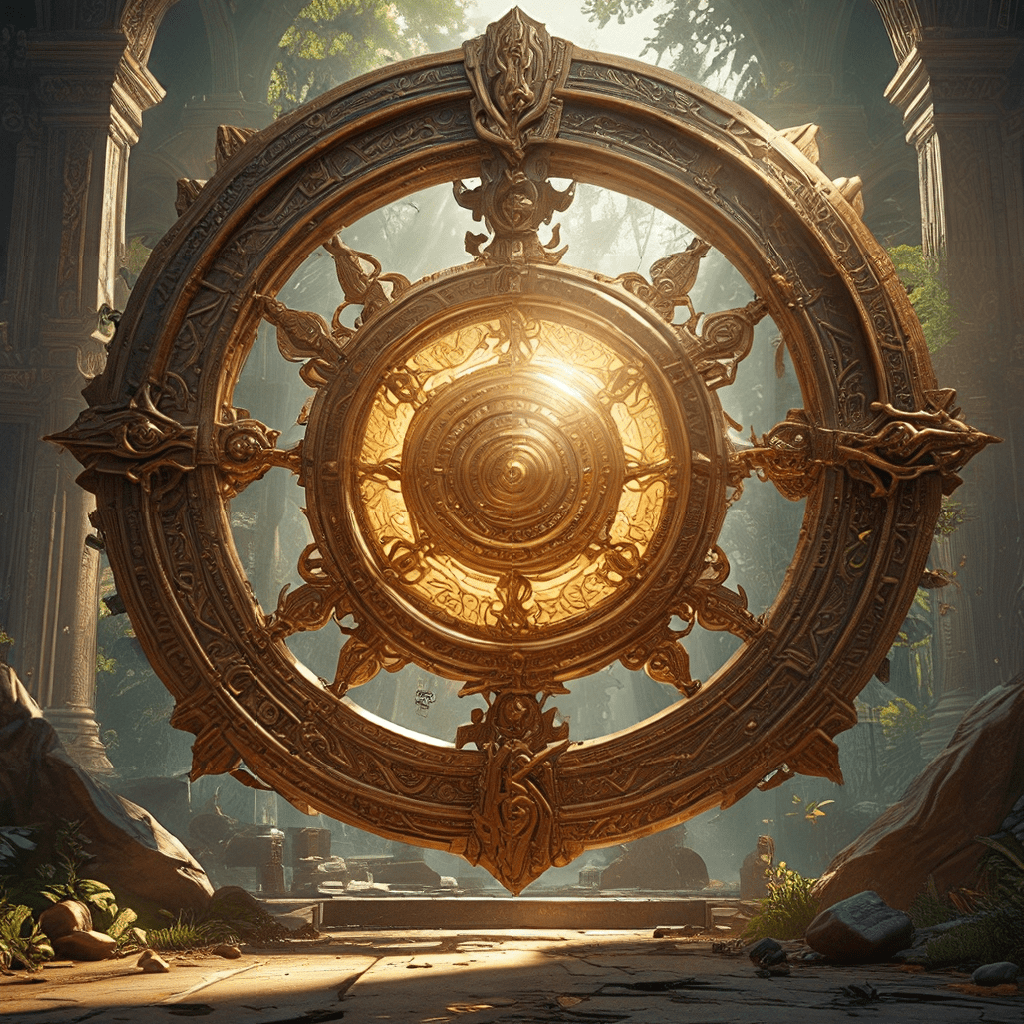The Power of Symbols: Unlocking the Secrets of the Egyptian Creation Myth
The ancient Egyptians, renowned for their magnificent pyramids and intricate hieroglyphs, also possessed a rich and complex mythology. At the heart of their beliefs lay the creation myth—a story that explains the origins of the world, humanity, and the cosmic order. This myth, passed down through generations, provides valuable insights into the Egyptian worldview, their understanding of the divine, and the role of humans in the grand scheme of the universe.
1. Introduction: An Ancient Story with Enduring Power
The Egyptian creation myth, like many creation myths around the world, is a powerful story that transcends time. It speaks to fundamental human questions about existence, purpose, and the relationship between humanity and the divine. While the details of the myth vary across different texts and periods, the core elements remain consistent, offering a glimpse into the Egyptians’ profound connection to the natural world and their belief in the cyclical nature of life and death.
2. The Myth: A Journey from Chaos to Order
The Egyptian creation myth begins with a primordial state of chaos, represented by a vast expanse of water known as “Nun.” This chaotic sea contained the potential for creation but lacked form and structure. From this nothingness emerged Atum, the self-created god who embodied the first spark of consciousness and order. Atum, often depicted as a self-created being, represents the fundamental principle of existence and the power of the divine to bring forth life from nothingness.
3. The Role of Atum: The Divine Architect
Atum, the first god, was believed to have created the world through a process of self-creation and divine speech. He emerged from the primordial waters, bringing forth light, order, and the first land. His act of creation is often described as a “rising,” symbolizing the emergence of consciousness and order from the depths of chaos. This act of creation was not a violent act, but rather a gentle and deliberate process, reflecting the Egyptians’ belief in the harmonious nature of the universe.
4. The Importance of “Ma’at”: Cosmic Harmony and Order
“Ma’at,” a concept central to Egyptian thought, embodies the principle of cosmic order, balance, and justice. This concept is woven into the fabric of the creation myth, highlighting the Egyptians’ belief that the universe was governed by divine laws, and that maintaining this balance was essential for the well-being of both the gods and humans. Atum, through his creation act, established “Ma’at” as the foundation of the world, ensuring its stability and harmony.
5. The Power of Creation Through Speech: The Word as a Force
One of the most intriguing aspects of the Egyptian creation myth is the power of speech. Atum, through his words, was believed to have brought forth both the physical world and the divine beings. This concept, known as “the word as a force,” reflects the Egyptians’ belief in the power of language to shape reality and create meaning. Their intricate hieroglyphic writing system, with its symbolic and phonetic elements, further reinforces this belief in the creative power of words.
6. The Sun God Ra: The Everlasting Light and Its Significance
The sun god Ra, often depicted as a falcon-headed deity, played a crucial role in the Egyptian creation myth. He emerged from Atum, representing the everlasting light and the source of life. Ra’s daily journey across the sky, from sunrise to sunset, symbolized the cycle of life, death, and rebirth. This cyclical journey was seen as a reflection of the ongoing process of creation and renewal. Ra, as the giver of life and light, held a prominent place in Egyptian cosmology and was worshipped as a powerful and benevolent deity.
7. The Emergence of Other Deities: The Expansion of the Cosmological Order
The creation myth goes beyond the initial act of creation by Atum. Other deities emerged, expanding the cosmological order. From the tears of Ra, for example, came the first humans, emphasizing the connection between the divine and the mortal realm. The emergence of these deities reflects the Egyptians’ belief in a complex and interconnected divine hierarchy, where each deity played a specific role in maintaining the balance and order of the universe.
8. The Symbolism of Water: The Primordial Source of Life
Water, represented by the primordial sea “Nun,” holds profound significance in the Egyptian creation myth. It embodies the source of life, the potential for creation, and the cyclical nature of existence. The Egyptians believed that water was the essential element from which all life emerged and to which all life eventually returned. The annual flooding of the Nile River, which brought fertility to the land, reinforced this belief in the life-giving power of water.
9. The Afterlife and the Cycle of Rebirth: A Connection to the Creation Myth
The Egyptian belief in an afterlife and the cycle of rebirth is inextricably linked to their creation myth. The journey of Ra across the sky, symbolizing the cycle of life, death, and rebirth, provided a framework for understanding the afterlife. The Egyptians believed that after death, the soul embarked on a journey to the underworld, where it was judged by Osiris, the god of the underworld. Those who passed the judgment were granted eternal life, reflecting the cyclical nature of creation and the enduring power of “Ma’at,” cosmic order.
10. Conclusion: Insights into the Egyptian Worldview and Humanity’s Place in the Cosmos
The Egyptian creation myth, with its intricate symbolism, provides a powerful testament to the Egyptians’ worldview. It reveals their deep understanding of the natural world, their belief in the power and order of the divine, and the importance of maintaining harmony and balance. The myth also highlights the Egyptians’ belief in the cyclical nature of life, death, and rebirth, emphasizing the interconnectedness of all things in the universe. Through this enduring story, we gain a richer understanding of the Egyptians’ profound connection to the divine and their place in the grand cosmic order.




